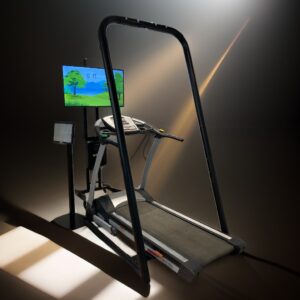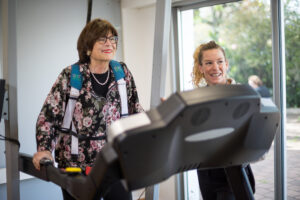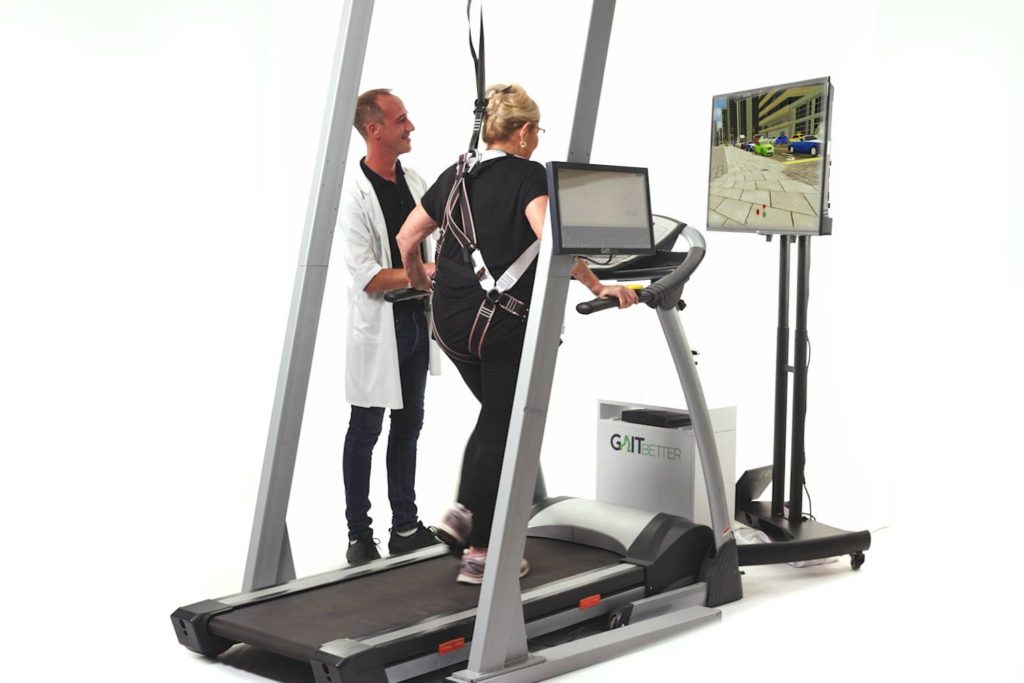Benefits of fall prevention programs

The risk and consequences of falls in older adults are staggering. More than 1 out of 4 older adults fall every year (36 million!), and this rate increases to 1 out of 3 for residents in senior living and 3 out of 4 adults in nursing homes.
While 34000 older adults die immediately due to falls every year, the longer-term impact is far greater. In 1 out of 5 falls, the elder person experiences a serious injury, such as a fracture or traumatic brain injury. After a serious injury, 25% of older adults will require a higher level of care (independent to assisted living, assisted living to skilled nursing, etc.) and 25% will die within six months.
This results in a significant fear of falling (FOF) among older adults. Almost 50% of older adults limit their activity because of a fear of falling and adults over 65 typically identify falling as their greatest fear by a wide margin.
All of this leads to loss of physical activity, increased loneliness, accelerated cognitive decline, and higher risk of cancer, heart disease, and dementia.
The good news is that falls in older adults are avoidable and do not have to be an inevitable part of aging. There are ways of keeping older adults on their feet and avoiding the risk of falls. With the right preventative measures in place the benefits of fall prevention programs can be profound.
What is a fall prevention program?
A falls prevention program is defined as:
An evidence-based program that systematically identifies potential risks (environmental, pharmacological, morbidities, etc.) and provides targeted intervention to lower the falls per capita rate within a population.
Fall prevention programs are typically carried out in locations that are exclusive to older adults (65+), such as senior centers and assisted living facilities and the benefits of fall prevention program can have a drastic impact on your residents including:
- Improving motor skills
- Diminishing the risk of falls
- Delaying elements of deterioration related to aging
- Increasing social skills and networks
Standard fall prevention programs
There are three sets of activities within a typical fall prevention program. The first activity is to look at the overall environment and eliminate potential tripping or slipping hazards. Elimination can include adding more lighting, ensuring appropriate handrails at all stair locations, using low-pile rugs, providing wide aisleways, etc. This can be instituted in the home and within a community living environment.
The second activity is to review the risks at the individual level. This can include ensuring prescriptions for glasses are up to date, medications are reviewed for possible cognitive or physical side effects, and periodically evaluate any vestibular or neurological issues that they may be experiencing.
The third activity is targeted interventions to prevent falls.
What are interventions to prevent falls?
Targeted intervention can include physical therapy, where the older adult receives one-on-one therapy from a licensed physical therapist for a limited duration (typically 12-15 sessions). Physical therapy sessions are often covered by insurance or Medicare, but those programs will typically limit the amount of physical therapy an older adult can receive in a calendar year. Targeted intervention can also include less intense group programs or classes, such as Otago, Tai Chi, and Bingocize. The cost of these programs is sometimes covered by the Medicare Advantage (itself or through Silver Sneakers), sometimes by the senior living community, and sometimes by the individual.

How can we improve fall prevention?
Industry surveys suggest that up to 75% of senior living communities have implemented some type of fall prevention programs for the elderly. When you also include fall prevention programs available through senior centers and other community organizations, a significant proportion of older adults in the United States have access to the benefits of fall prevention programs.
Unfortunately, there is evidence that this explosive growth in fall prevention programs have not been effective in reversing the epidemic of falls among older adults.
Data published by the Centers for Disease Control (CDC) shows the fall death rate among adults age 65 and older increased 40% between 2007 and 2018, reaching 64 per 100,000 (and, as discussed earlier, this is likely a conservative estimate). Even though more recent data has suggested that the fall rate is stabilizing, there are clearly opportunities for improvement.
Effectiveness of fall prevention programs
Almost all the benefits of fall-prevention programs are evidence-based, meaning there are studies demonstrating effectiveness. But, peer-reviewed papers often described fall prevention programs as only modestly effective or even ineffective. So, what’s missing?
Discussions with leading researchers and practitioners identified five key issues with current fall prevention programs
- Fall prevention programs are typically reactive, initiating once someone is identified as a fall risk, even though 50 to 75% of first-time fallers were never identified as a risk
- Current fall prevention interventions force participants to choose between short-term individualized therapy provided by a skilled physical therapist or longer-term wellness activity provided in a group setting. Neither arrangement is optimum in preventing falls over a large population
- Overemphasis on environmental mitigation and physical exercise without addressing the role of executive function in balance and gait
- Adherence rates are relatively low, especially for those interventions that may take several months to show demonstrable effects
- Most studies demonstrate a limited efficacy, with up to 30 to 50% reduction in falls.
Using virtual reality in fall prevention programs
Solving the limitations with current fall prevention programs is the reason we recommend GaitBetter’s evidence-based fall prevention technology. GaitBetter uses semi-immersive virtual reality in combination with standard treadmills to provide individualized motor-cognitive therapy to deliver both short-term and longer-term interventions.

Based on over 10 years and $8 million of research funding and backed by multiple randomized clinical trials with over 17 peer-reviewed publications, GaitBetter utilizes advances in 3D sensing and artificial intelligence to actively resolve existing issues with fall prevention programs.
The benefits of fall prevention with GaitBetter is a proven effective solution, with up to 80% reduction in falls

